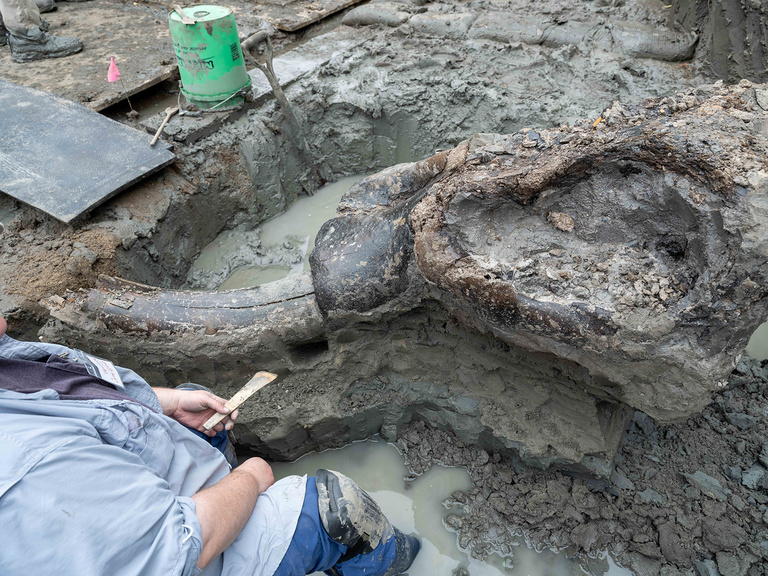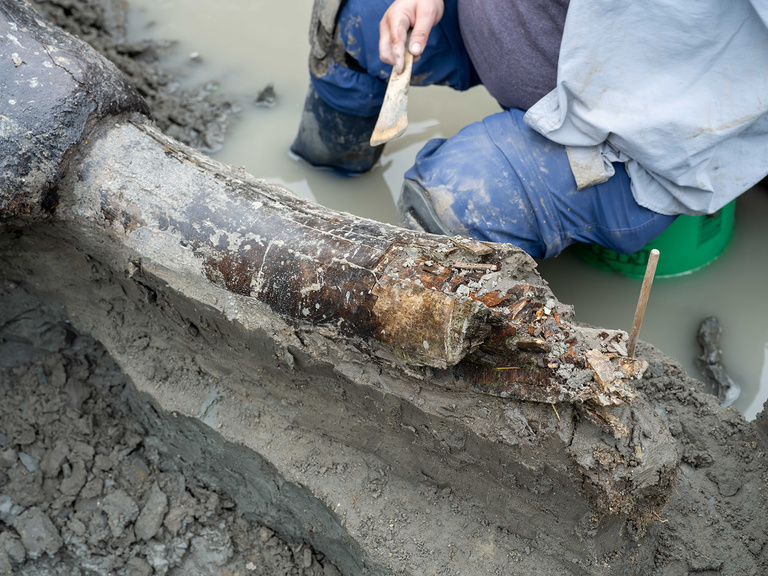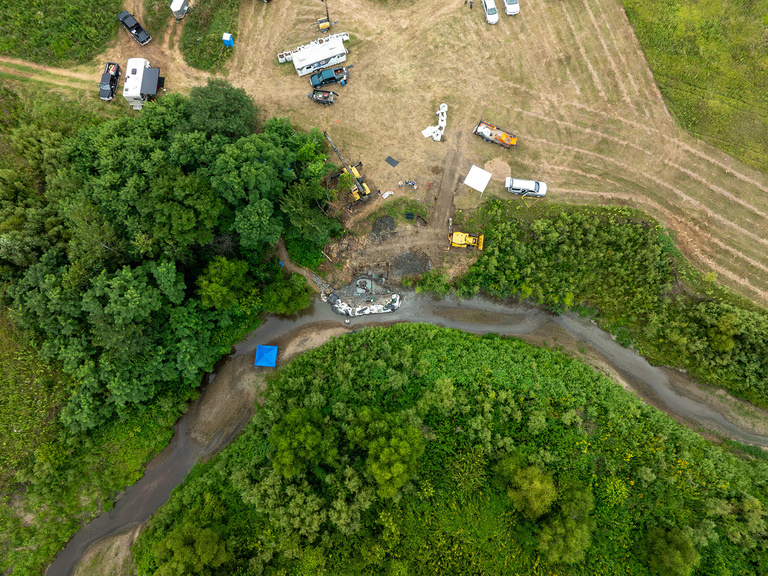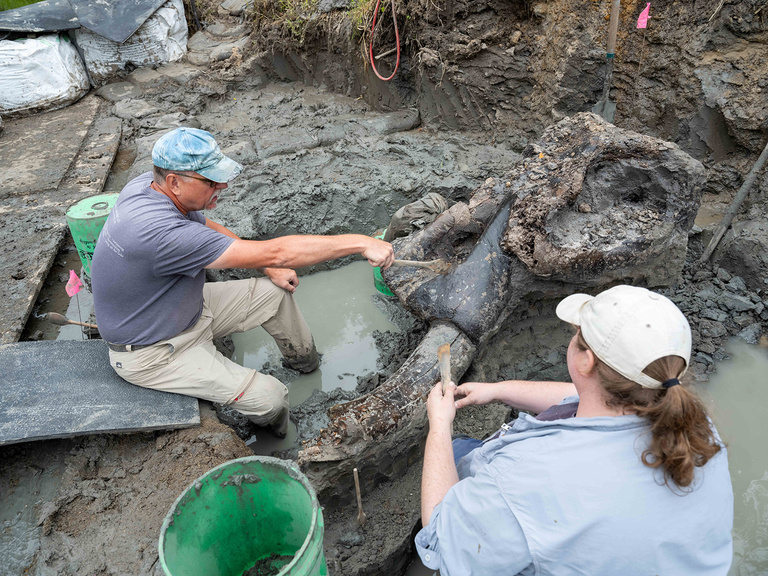University of Iowa archaeologists have uncovered the first-ever well-preserved mastodon skull scientifically excavated from the state of Iowa — a find that notably dates to when the first humans lived and hunted in the area.
A mastodon is a large mammal similar to both elephants and mammoths that roamed North America from around 3.5 million years ago until 10,500 years ago. The archaeologists, who include John Doershuk, director and state archaeologist at the University of Iowa Office of the State Archaeologist (OSA), were contacted in the fall of 2022 by a local resident of Wayne County. The resident knew someone who had stumbled upon an unusually long bone embedded in a creek bed on private property in the southwest part of the county.
The bone, which turned out to be a mastodon femur, caught the state archaeologists’ attention.
The team returned the following fall to investigate. While there, they also uncovered a broken tusk protruding from the creek bed. All signs suggested that the tusk was likely still attached to the skull — an intriguing discovery that prompted formal scientific investigation.
After securing grant money from the Wayne County Foundation and donations made to the Prairie Trails Museum of Corydon, Iowa, to support the dig, the OSA team returned in August 2024 to carefully excavate the skull and several additional mastodon bones, likely all from the same animal. Using radiocarbon dating, the skull was determined to be 13,600 years old.
That date is significant because it overlaps with human occupation in the area.
“We’re really hoping to find evidence of human interaction with this creature — perhaps the projectile points and knives that were used to kill the animal and do initial butchering,” Doershuk says. “There’s also potential evidence on the bones themselves — there could be identifiable cut marks.”
Throughout the 12-day dig, the archaeologists discovered several human-made artifacts, such as stone tools. While dated a few thousand years after the mastodon skull, these finds are promising, indicating human existence in the creek drainage — which had never been recorded until now. Further archaeological finds, coupled with documentation of the bones’ orientation and location, could help reveal human interaction and how and why the creature came to be deposited in the creek bed.
The OSA and UI Paleontology Repository, housed in the Department of Earth and Environmental Sciences, will analyze and conserve the skull and other recovered bones. Once complete, the bones will find a permanent home in a newly designed exhibit at the Prairie Trails Museum.
Click the thumbnail images below to see the full-size photos, shot by Office of Strategic Communication photo coordinator Kirk Murray.








